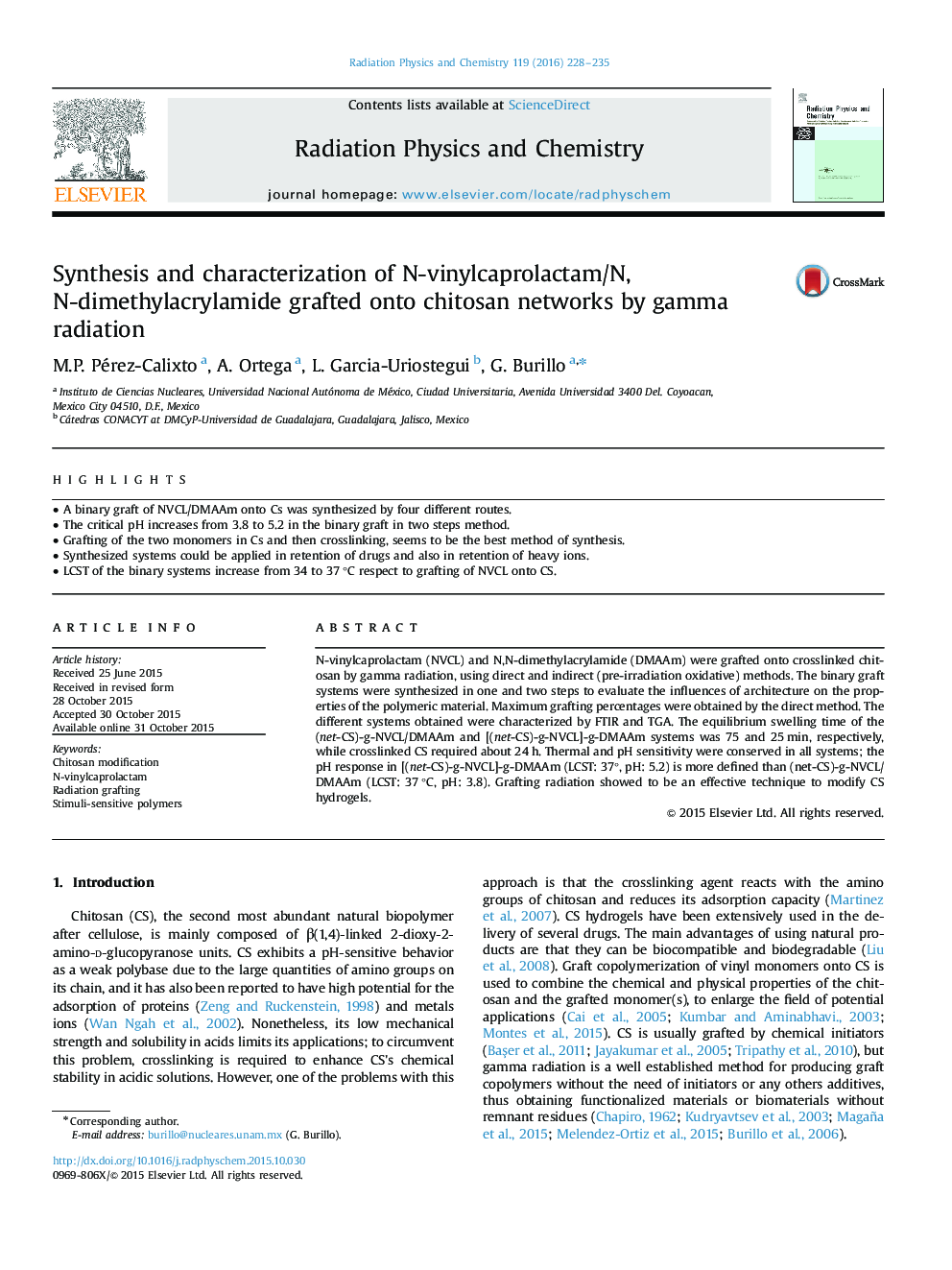| Article ID | Journal | Published Year | Pages | File Type |
|---|---|---|---|---|
| 1885778 | Radiation Physics and Chemistry | 2016 | 8 Pages |
•A binary graft of NVCL/DMAAm onto Cs was synthesized by four different routes.•The critical pH increases from 3.8 to 5.2 in the binary graft in two steps method.•Grafting of the two monomers in Cs and then crosslinking, seems to be the best method of synthesis.•Synthesized systems could be applied in retention of drugs and also in retention of heavy ions.•LCST of the binary systems increase from 34 to 37 °C respect to grafting of NVCL onto CS.
N-vinylcaprolactam (NVCL) and N,N-dimethylacrylamide (DMAAm) were grafted onto crosslinked chitosan by gamma radiation, using direct and indirect (pre-irradiation oxidative) methods. The binary graft systems were synthesized in one and two steps to evaluate the influences of architecture on the properties of the polymeric material. Maximum grafting percentages were obtained by the direct method. The different systems obtained were characterized by FTIR and TGA. The equilibrium swelling time of the (net-CS)-g-NVCL/DMAAm and [(net-CS)-g-NVCL]-g-DMAAm systems was 75 and 25 min, respectively, while crosslinked CS required about 24 h. Thermal and pH sensitivity were conserved in all systems; the pH response in [(net-CS)-g-NVCL]-g-DMAAm (LCST: 37°, pH: 5.2) is more defined than (net-CS)-g-NVCL/DMAAm (LCST: 37 °C, pH: 3.8). Grafting radiation showed to be an effective technique to modify CS hydrogels.
